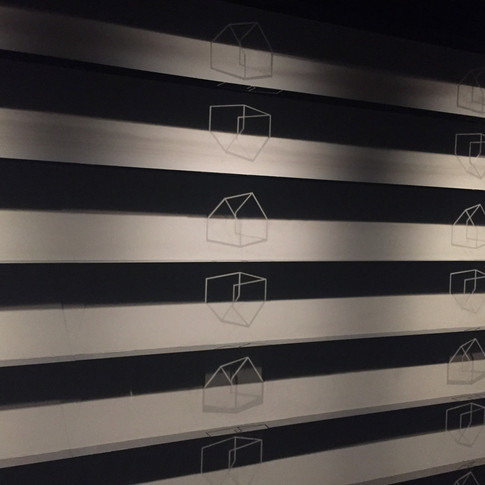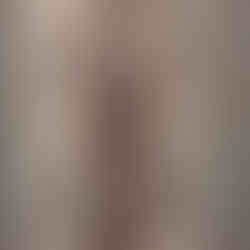Escher x Nendo - Between Two Worlds -
- Karin Grech
- Jul 5, 2019
- 4 min read

This review has been a long time coming. I went to see the Escher x Nendo exhibition in Melbourne last March. Writing about it has been on my to-do-list for such a long time but so many blog posts took priority and I somehow never got round to it.
Yet I think it would be a pity if you, my dear readers, miss out on Escher. So, defying the heat and the slowdown in brain activity that comes with it, I will present you Escher in a slightly modified post format. I hope it will still be an enjoyable summer reading (and watching) experience. If you wish to delve deeper into the subject of Escher and his art I will provide enough links for you to do that.
Let me start with a bit of background information about the artist himself.
Maurits Cornelis Escher was Dutch and lived from 1898 to 1972. He was a handsome man (considering his looks, in today's world he would probably be a hipster..) with an intriguing intellect that thought up some mind boggling art. Art you probably know because it has been reproduced so many times that the images have become very familiar - without necessarily linking the artist's name to it.
Escher lived a lot of his life in Italy and many of his early woodcuts depict the landscapes that inspired him there. Woodcuts had entered his life very early on as his father used to travel to Japan for work and brought back Japanese prints from his visits. Escher also took inspiration from many Renaissance painters like Dürer who was a master in self-portraits, and Parmigianino and his use of convex mirrors that produced illusionary effects. He also owned a set of Piranesi's prints titled "Imaginary Prison" that depict fantastical views of looping staircases in rather nightmarish architectural settings.
Escher took these concepts a step further though. Have a look at his 'Self-portrait in Spherical Mirror' or the endless 'staircase scape' titled 'Convex and Concave' and you will see what I mean. Piranesi might come through in works like 'Relativity' , 'Other World' and 'Ascending and Descending'. This last one was taken on and amazingly reproduced in the movie 'Inception' by film director Christopher Nolan (also see the Penrose documentary - links below). In his drawings and prints Escher takes seemingly ordinary environments and makes us see the enigmatic and mysterious in them. He makes three-dimensional space appear on two-dimensional planes by employing various techniques like the use of patterns and textures, light and shadow, and by ingenious placement of objects within his compositions.
He first found inspiration for his 'Regular Division of the Plane' series in the tessellations (= a pattern made up of shapes that fit together without gaps or overlap) used in Moorish architecture during a visit to the Alhambra in 1936. Again, he developed the concept by abandoning these geometrical patterns and substituting them with shapes of insects, animals and humans.
Often he got inspiration from mathematicians, especially in his works of the series titled 'Regular Division of the Plane' and 'Circle Limit' where he explores infinity. It is all wonderfully and interestingly explained in the Penrose documentary and I urge you to take the time to watch that. It explains so much about Escher's art.
I'd like to finish by quoting psychiatrist Michael Schwarz, a contributor to the book 'More than meets the eye' that accompanied the exhibition. He sums Escher's oeuvre up beautifully by saying:
M.C. Escher's works defy the laws of physics, mathematics, biology and even logic. He achieves this using paradox, and plays on our inability to hold two contradictory images in our minds at the same time. He was celebrated as a master of optical illusion and has created some of the most iconic images of the twentieth century.
Escher said "I could fill an entire second life with working on my prints" - a thought that makes me wish that he will be reincarnated soon. As there can never be enough art like his.
And what about Nendo you might wonder? Nendo is a Japanese design studio that was given the brief by the NGV "not to design an exhibition around Escher, but to enter into a collaborative dialogue with the artist". And that's what Nendo did.
They created architectural and spatial installations which they based on the minimalist form of a house. The house - this iconic symbol of space - is used in different designs and installations to interpret Escher's work and create a contemporary ambiance to complement the display of his artworks. You can further explore these designs on the NGV website.
If Escher, his work and his inspirations intrigue you, I suggest that you watch this documentary called The Art of the Impossible. It comes in 2 parts (here is the link to the second one) which are only 15 minutes long, so definitely worth half an hour of your time.
In it Sir Roger Penrose, a world renowned mathematician and cosmologist, talks about his and his father's connections with MC Escher. (The Penrose triangle is mentioned in the description to the work entitled 'Waterfall' in the gallery below).
What I found particularly intriguing is that in this documentary it transpires that the relationship between the artist Escher and the mathematician Penrose is like one of Escher's work, the inspiration seems to be a continuous loop that makes it difficult to identify where it all started or ended.
Most of the works in this exhibition had come from the Gemeentemuseum Den Haag in The Hague. By now they should be back there and if you feel like a dose of Escher, just hop over to the Netherlands and have a look at his works there.
For the picture gallery I have also opted for a slightly different format. Rather than short captions, I am posting the corresponding wall texts with the artworks - whenever I have them. Do forgive me
if the photos aren't always centred. The reflections of lighting is sometimes best avoided by taking the photos at an angle. And regarding the wall texts I have to admit that I usually capture them purely to remember all the titles; only this time I decided to also add them to the photos of the artworks for additional information.
It should be a bit like walking through the exhibition itself - I hope you'll enjoy it!




























































































































































































Comments